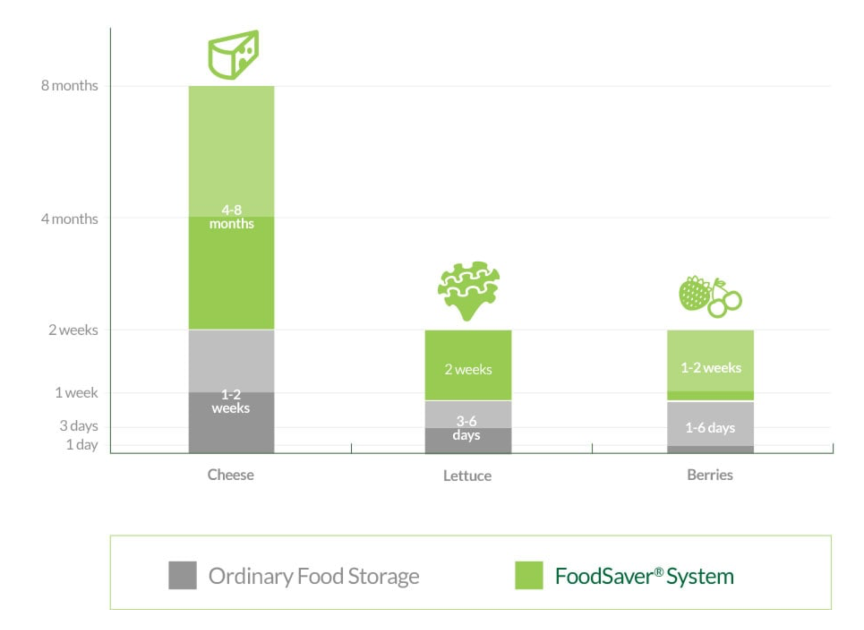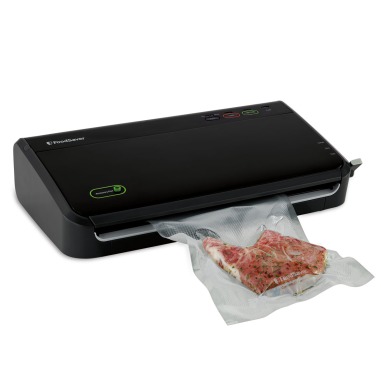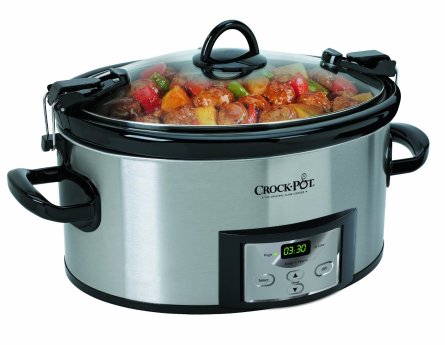This post contains affiliate links. You can read our disclaimer here. Just a heads-up, we’re not sponsored by the following brands. They’re cool and all, but all products mentioned were purchased with our own money for full retail price.
Hey everyone, Ian here. My team and I have been in an ongoing discussion at work. No joke, we’ve got a running debate on the best kitchen gizmo to save money. You’re about to read a summary of the differing stances held on some of the tools not of our trade, but our taste for saving cents.
[Tell me that’s not catchy. 🌝]The Contenders
FoodSaver
The discussion at work started with Susan’s lunch, but even more the vessels in which it was packed. Airtight, vacuum-sealed plastic pouches roughly the size of a deck of cards held slices of bright green avocados, steel cut oatmeal, fresh berries, and chopped salad. Each of these ingredients was portioned into several individual servings. Susan used a FoodSaver to package her food into a fashion that she claims lasts well over a week.
It’s hard enough to keep half an avocado for over a couple days given how fast they tend to ripen. FoodSaving, however, sucks all the air out of plastic pouches you yourself cut to size. You can read more about how they work here, but the gist is that vacuum-sealing removes the air which causes spoilage.

FoodSaver’s claim of “how much longer food stays fresh”, as found on their website.
The numbers on the duration of food life (and of course this is at best under ideal conditions given this data is from FoodSaver’s own website) indicate shelf life in a refrigerator more than doubles with the use of this system. That’s a tall claim, but Susan’s lunch is the proof in the pudding. She swears by her FoodSaver, and even talked another coworker of ours, Johann, into getting one of his own. And as it just so happens, I’ve actually owned a FoodSaver for many years, though it rarely comes out of the cupboard.

One of my main gripes with FoodSavers is that they require an additional variable cost. The bags for the system are, for the most part, single use. After they’re cut they’re no longer airtight unless you’ve got a FoodSaver around. Of course, you can make individual servings, which can be helpful in terms of healthy portioning, but new bags are between $10 and $30 on the manufacturer’s website. No doubt cheaper elsewhere, but the point is that it’s a price you have to repeatedly pain for the benefit of (ostensibly) twice the shelf life. Do you really need food to last that long?
Snapware
Jane and I use Snapware. It’s from the same family of brands as Pyrex and CorningWare. What does that mean? Not much. They’re established brands, which suggests they have solid marketing budgets. But there’s also the argument to be made that these companies have been around as long as they have because of their ability to innovate.
Either way, we’ve been pretty satisfied. Though there’s still air in the containers after you snap the lids closed, we generally cook only enough food to last us a week. Nothing we’ve made thus far has spoilt in that period of time, and it’s nice to be able to microwave the food in its glass container. The biggest downside is how much room these suckers take when not in use.
Crockpot (a.k.a. Slow Cooker)
One thing we all agree on is that no matter how you store your food, a crockpot is a great way to make it. Cheap and easy, crockpot meals can be prepped and set to cook overnight. In the morning, you’ve got a hot meal ready to eat or pack for lunch. Alternatively, throw a meal together before work and dinner will be waiting when you get home. How nice!
Again, the downside here is space taken. A standard 6-quart crockpot takes up a good chunk of counter space, so if you’re using it once every seven days to pre-make meals for the week be sure to clear out some cupboard space for storage. Overall, the cost savings from making large batches of food and the convenience of being able to toss in seemingly endless combinations of ingredients and come out with something tasty has far outweighed the inconvenience of taken space. I got my first crockpot in college and I’ve been hooked ever since. Whether you vacuum seal or snap shut servings of your meal, a crockpot is a home necessity.
Trinidadian Food Truck
If we fail to make our own lunch on a given day, our trusted fallback is the Trinidadian food truck just a few blocks from our office. The prices are cheap and the food is delicious. It’s an easy win for all!
Summary
There’s a lot you can do to cut your dining costs, and no matter how you store your food you’ll save a lot of money (and probably eat a lot healthier) by making it yourself. You don’t have to get any of the items mentioned above, but if you happen to have one or more sitting around unused, go make something tasty! There’s no good excuse for letting potential savings go to waste.
What are some of your ways to save in the kitchen? Leave suggestions in the comments below!



Comments
Trinidadian food truck! Now you’re speaking my language! I think I just found my number one reason to visit New York! For now I’ll have to stick to the Trinigourmet.com site for recipes.
I’m also a fan of the snapware containers, I toss all of our leftovers from dinner in these and take them to work the next day. They are great because they don’t leak when you are transporting soup or other liquid foods.
We like to cook lots of rice and then wrap individual portions into cellophane and freezing them. It works well for home made pasta sauces, soups and other items as well, so when you are to lazy to cook, you can quickly re-heat and eat.